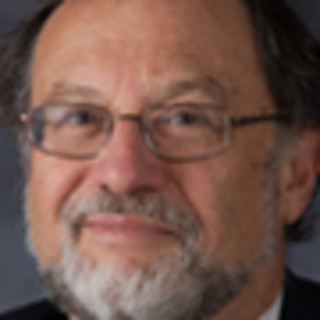Imagine a time when the illness, “I feel short of breath,” was more than a symptom; it was the disease. Careful questioning on the clinician’s part might elicit a cough or perhaps information on night sweats that helped the clinician choose the right treatment. Or, he may have placed his ear upon the patient’s chest to hear the sounds of the lungs and heart, the earliest form of auscultation. Rene Laennec began a tidal wave of change when he used a rolled-up notebook to listen, a tool he ultimately built as a wooden tube — what we know today as the stethoscope. [1]
The most direct result of the newly-created tool was that Laennec could actually hear breath sounds and the heart; the signal was now greater than the noise. There were so many sounds, and all required names: “wheezing,” “rhonchi,” “rales,” even “whispered pectoriloquy.” Dyspnea was no longer a single disease, it was more-heterogeneous with perhaps multiple causes. Before the stethoscope, a patient’s subjective tale defined the illness; Laennec’s tube allowed physicians to observe objectively. 99% Invisible, a podcast, describes the ensuing change in our thinking.
“Little by little our entire understanding of disease shifted from one centered around symptoms to one centered around objective observation of the body. Medical language completely changed, as doctors invented new anatomical words for diseases…”
The stethoscope was a hot new technology, quickly and widely embraced. It was a game changer. Physical examination began to assume greater importance, and the paradigm shifted. Physicians could detect the internal changes of a disease without the patient necessarily feeling ill. Starting from there, our technology continued to improve. X-rays let us see more deeply, CT more clearly, PET more functionally — just as the stethoscope had allowed us to hear more clearly.
Like any technology, the stethoscope had unanticipated consequences. A disconnect between patient and physician began that continues to this day. As 99% Invisible suggests“Before the stethoscope, to be sick, the patient had to feel sick. After the stethoscope, it didn’t matter what patients thought was wrong with them, it mattered more what the doctor found.” The subjective present illness was no longer the key; objectivity, heart, and lung sounds were ascendant. The knowledge of auscultation was passed from master to apprentice. After all, someone needed to demonstrate stertor and squawks. [2] But as with any tool, more sensitive and precise tools supplanted them. In the stethoscope’s case, the cardiac ultrasound came around, and the stethoscope lost its primacy. Today, with few exceptions, it is a screening tool to access more definitive diagnostic tools. As Dr. Andrew Bomback, a nephrologist and an assistant professor at Columbia describes
“It’s become almost a ritual more than an actual tool in terms of making diagnosis, … more a fashion accessory…”
Laennec’s stethoscope set off another disconnect. As simple tools became complex and sophisticated, the primacy of the physician was on shakier ground. After all, what do you trust more, a cardiac ultrasound or the stethoscope in your hands? If the stethoscope was a direct extension of our hearing, a cardiac echo extends our vision. Yet, it is applied by a technologist; physicians remain the coordinating wizard. We are now disconnected from our patient and our tools. In a time of standardized care and nationally promulgated “best practice” clinical pathways, clinicians and other “providers” are differentiated more by how they apply their algorithms than the algorithms themselves. Diagnostic and treatment pathways are more-standardized, but when and how they are applied (and equally, if not more importantly, how we share the algorithm with the patient) is the stethoscope’s lasting legacy. Dr. Bomback continues,
“The stethoscope is still a part of the exam,” he says, “aligned with the laying on of hands, associated with healers.”
The age of sophisticated diagnostic and therapeutic tools, initiated by Laennec’s rolled-up notebook, has finally caught up with us. Artificial intelligence, which were initially systems seeking to emulate physician’s thinking, has been supplanted by machine learning. Machines can apply algorithmic care; they can see and hear and touch far better than we can. Much of our craft has been stripped away by our tools. 23andMe can provide you with genomic information; you can check your blood sugar, store the value in the “cloud,” and modify your insulin regimen using a glucometer at home. While actual care is increasingly standardized and algorithm driven, we are left with only one ‘expert’ ability, the ability to communicate the why of these tools and treatments. Listening is our remaining bespoke service, it is our stethoscope’s lasting legacy.
Empathetic listening, whether delivered by a concierage physician, a health spa, a mid-level provider or a staff member, is today’s bespoke service. Empathetic listening does not require four years of medical school and a similar number of years of residency; it is a necessary, but insufficient, component of our expertise. Physician’s advance training allows us to disseminate, modify, and understand the tools we apply. But, this job does not require as many physicians as we think. Bespoke care can be delivered by others. [3]
If we do not wish to share the fate of the stethoscope and become a simple screening tool, then we should concentrate more on the qualities that make physicians unique in this day and age. In using our stethoscope we enter an intimate conversational space with our patient, no longer behind a desk or staring at a screen.
Intimate, knowledgeable conversation combined with empathetic listening is our strength. It is was will always differentiate us among the ‘providers.’ It’s time we see its value and not be distracted by shiny new drugs and procedures. The stethoscope continues to show the way, we just have to listen.
Writer’s note: This article was prompted by the wonderful, 99% Invisible, a podcast looking at the impact of design in our world. Their episode, entitled The Stethoscope, is a gem and worth the 20 minutes of time.
Charles Dinerstein, MD, MBA, FACS is a retired vascular surgeon and senior fellow at the American Council on Science and Health where he writes on contemporary health issues. His more philosophical thoughts can be found at Surgical Analytics.
Footnotes:
[1] The apocryphal story suggests that direction auscultation by ear was both too intimate a gesture and that in a time of skin infections, fleas and mites a bit to unhygienic for the practitioner.
[2] Stertor refers to heavy snoring or gasping; squawks are squeaky sounds. The learning of auscultation as hear one, say one continued well into our times. The Cleveland Clinic always listed the next day’s clinic patient’s previous heart sounds so that the medical students and residents could hear and appreciate them in the company of a more experienced clinician.
[3] Here is what the Canadian Medical Association found using Organisation for Economic Co-operation and Development (OECD) data from 19 countries, “we have determined that there is no association between avoidable mortality and overall physician supply. Similarly, there is no relationship between avoidable mortality and general practitioners and family physicians per capita, specialists per capita, nurses per capita, doctors and nurses per capita or health expenditures per capita. These findings should move us to recognize that (a) more doctors will not necessarily translate into better healthcare outcomes for Canadians…”







